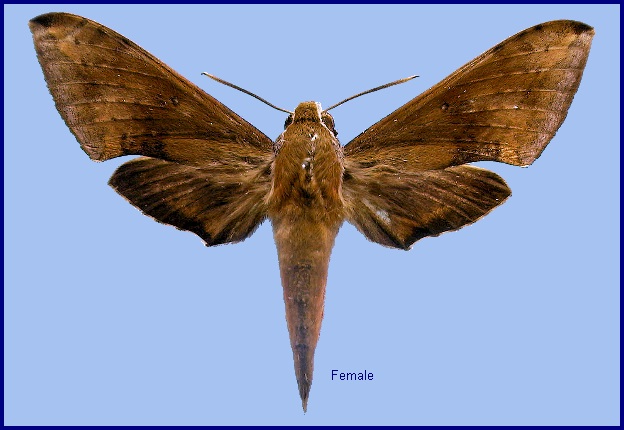
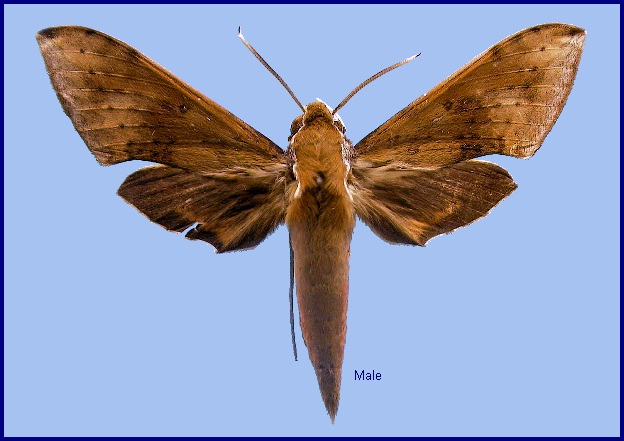
Rhagastis aurifera formosana Clark, 1925, Proc. New Engl. zool. Club 9: 37. Type locality: Central Formosa [Taiwan, Nantou Hsien], Horisha [Puli].
Synonym. Rhagastis aurifera formosana Clark, 1925.
Synonym. Rhagastis castor formosana Clark, 1925.
Wingspan: 53--68mm. Visually very like Rhagastis castor (Walker, 1856), but smaller. Also very similar to R. chinensis Mell, 1922, but colour and patterns paler.
Male genitalia similar to that of R. chinensis. Valve more rounded. Sacculus shorter and wider. The phallus is of medium length and straight, with the anterior lobe of the process strongly curved, and one of the sides with sparse apical serration. Female genitalia also similar to that of R. chinensis. Anal papillae apophyses thicker; ostial lobe shorter; ductus bursae more curved and shorter. Corpus bursae elongated; signum shorter and wider than in R. chinensis (Jiang et al, 2024).
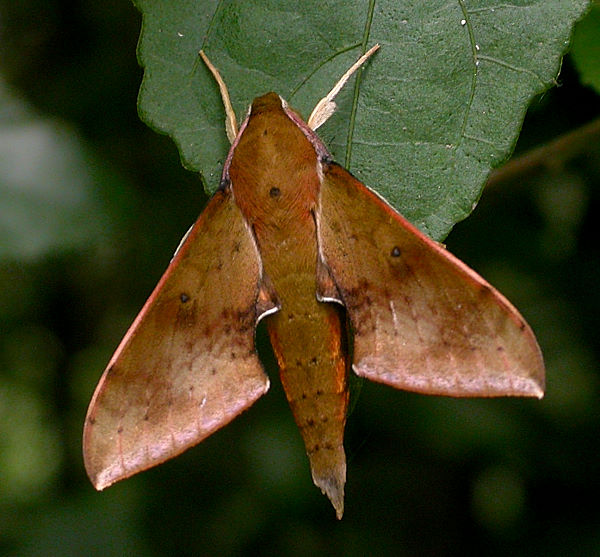
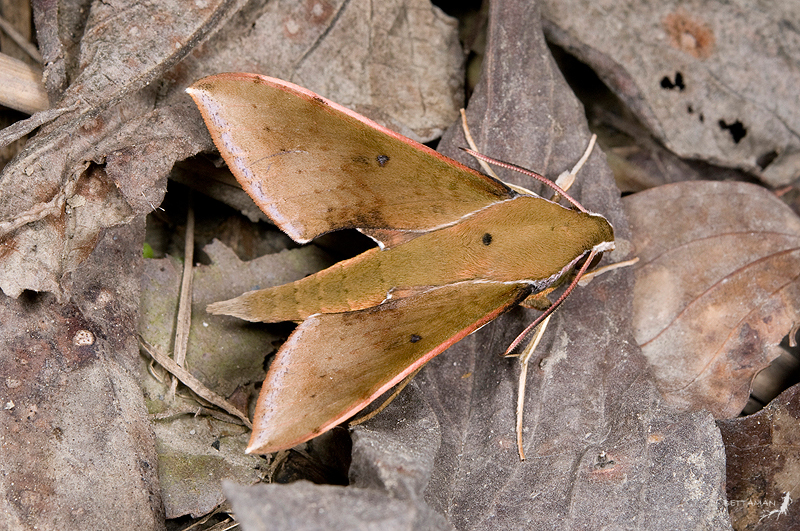
Taiwan: iii-xi (Hualien Hsien); iii-v (Kaohsiung Hsien); viii (Yilan Hsien).
OVUM:
LARVA:
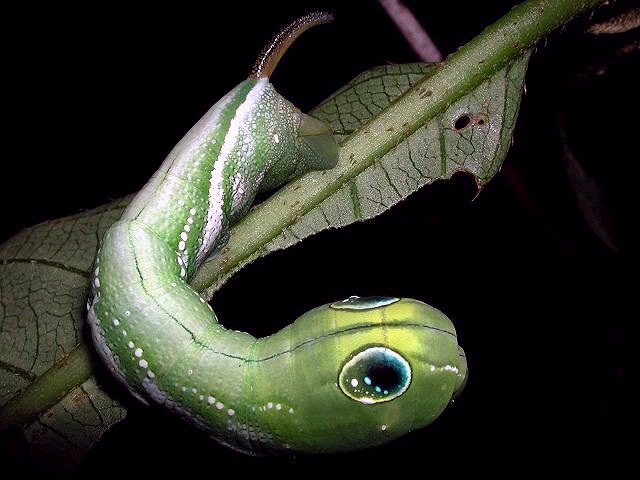
PUPA:
Larval hostplants. Saurauia tristyla, Hydrangea chinensis and Tetrastigma formosanum.
Unknown.
Taiwan: Hualien Hsien (Taroko National Park; Hungyeh); Nantou Hsien (Puli; Houfuanshan; Lushan Spa); Yilan Hsien (Taipingshan); Kaohsiung Hsien (Shanping, 640m; nr. Tuona, 12km SE of Shanping, 750m); Taitung Hsien (Donghe, 560m); Taipei Hsien (Fushan; Wulai); Chiayi Hsien (Shanmei, 800m; Alishan, 2000m; Fenchihu); Taichung Hsien (Lishan).
Endemic to Taiwan.

Map: Distribution of species of the castor group of the genus Rhagastis. The blue dotted line indicates the range of R. chinensis, the red dotted line indicates the range of R. aurifera, the green dotted line indicates the range of R. castor, and the orange circle indicates the range of R. formosana (© Jiang, Wang, Xu, Kitching, Huang, Hu & Xiao, 2024).
 Return to Sphingidae of the Eastern Palaearctic species list
Return to Sphingidae of the Eastern Palaearctic species list